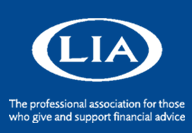Re-mortgaging Your Home
Things to Consider When Re-mortgaging Your Home in 2018 in Ireland
The holistic concept of re-mortgage revolves around the judicious use of an existing mortgage to take a new mortgage for the purpose of saving costs as well as other benefits. Explained in the simplest of terms, re-mortgaging is the method by which a home owner, having a running mortgage, attempts to reduce the interests and increase the benefit on the repayments by transferring to a different lender.
Do you have a mortgage that’s pinching your pocket more than what you’d like? Read on to find out how you can leverage the concept of re-mortgage to help you save money. Proper financial planning in life is the precursor to a happy and secured future.
In a nutshell, re-mortgage implies going through the process of mortgage once more, with the purpose of reducing the existing payment burdens, or having additional finances, or a combination of both. It is mandatory that at least one secured collateral loan should be running which is the base for every re-mortgage.
The re-mortgage can be done with the existing lender, or with new banks and financial institutions which throws open plenty of options for the borrower.
What are the Real Benefits of Opting for Re-mortgage?
Having one’s own house is a dream and also a necessity. Mortgage is the practical option of owning a home for any typical individual who’s either salaried or self-employed. Now, if you’re a salaried individual, you probably know that your income never remains stagnant. It varies over the years in relation to your career or job progression. In most of the scenarios, it normally goes on an upward trajectory, while in some unlucky cases, it can take the descendant path too. In both the scenarios, reworking of the running loan can prove beneficial.
Many banks and financial lenders release tempting mortgage offers with reduced interest rates in order to pull customers. When such offers become available, the existing borrower can always see the reduction in interest rates that accrues to them over the current interest rate they are paying. Once satisfied, they can switch over to a new lender.
- Lowering the Interest Rates:
Many banks offer variable rates of interest when a mortgage is released. These may change in accordance to the market conditions of Ireland and the Central Bank’s credit policies. Any increase in the interest rate is always burdensome, especially when income is stagnant. In such times, it is ideal to consider re-mortgage with other banks having a fixed rate of interest. It is better to reduce the mortgage term to a lesser tenure of 15 or 20 years albeit with a higher monthly instalment. Lengthy repayment schedules mean paying atrociously high interest rates.
- Consolidation of Existing Debts:
The need to consolidate any existing short-term debts is a catalyst necessitating the re-mortgage. It is better to merge existing loans like personal loans into the re-mortgage, with a single mode of monthly payment. The terms and criteria will vary for different lenders of course. The general rule is that it should not exceed more than 10% of the re-mortgage amount.
- Equity Release
Equity release is another factor which helps every borrower. It is a form of refinance or additional amount granted against the existing mortgage. The equity is the difference between the current market value of the property and the pending mortgage amount. To take an example –
If the current worth of the property owned by Gary is €180,000, and the mortgage amount is €130,000, then Gary is liable for an equity release of up to 90% (mostly) of the property value. This means he can avail €50,000 of equity release which he can use for some important commitments, say, paying for his daughter’s education.
- Home Renovation
The above-mentioned form of top up re-mortgage can also be used for home improvement. This is a growing trend in Ireland. Instead of investing in a new suburban villa, families tend to improve the aesthetics of their existing homes. In such cases, they approach the existing lender for loan enhancement. There are also tax rebates given by the Government in certain scenarios.
The Home Renovation Incentive (HRI) scheme allows for a tax credit of 13.5% of qualified work, up to an amount of €30,000. To avail this, all qualified work must be successfully executed between 25th of October 2013 and 31st of December 2018.
It needs to be noted that while re-mortgage centres on home buyers, in recent times, there has been the increasing use of commercial properties for the same purpose. This is because businesses always require liquidity and refinance for expansion activities.
Scope of Home Re-Mortgages in Ireland
The trend of re-mortgaging homes, though slow to start off at first, is catching up in the country. The most important factor cited by people when talking about re-mortgaging is the sheer lack of knowledge they possessed on the matter. There are several first-time home buyers who would’ve gladly switched lenders on their existing mortgages had they known the advantages earlier.
The Central Bank of Ireland in 2015, published an Economic study called Switch and Save in the Irish Mortgage Market? that details the various benefits that a borrower can enjoy when switching between lenders. According to the study,
- An estimated 21% of loans could save significant money through re-mortgaging, out of the half a million mortgages analysed
- Out of this percentage, 16,000 borrowers can stand to save over €1,000 in the first year alone; and about 27,000 borrowers can save upwards of €10,000 over the loan tenure
- Though consumers have to shell out additional legal fee when switching lenders, which could be approximately €1,300, an estimated 70% of borrowers could recover this financial cost in the first 12 months itself
- Since 2014, only 38 borrowers every month took up re-mortgages from different lenders (only considering the 5 biggest banks in the country)
How to Evaluate and Select the right Re-mortgage
Online check – It is the digital era now. Every buying and selling activity is influenced online through information and knowledge repositories. There are several websites offering re-mortgage services as a consultancy. They present the comparative details of the various lenders. It is always better to refer to more than one website in order to arrive at a correct decision. A detailed study is the need of the hour.
Evaluate all Hidden cost – Whenever a switchover to a new lender is finalized, there are several hidden costs which may not be apparent at one go. These include the legal, processing, and administrative charges. It should not be that in the temptation to save on interests, the final payment becomes more through such charges. The Annual Percentage Rate of Change (APRC) is the best tool to ascertain the exact quantitative net savings.
Evaluate all the open costs – This includes: pending tenure, existing and new interest percentage, amount of interest to be paid in old and new loans, other legal costs, etc. Final decision should be made only if there is a crystal-clear savings on the interest part.
Debt Consolidation angle – When going for debt consolidation, the borrower should take the utmost care to see that the interest payment is saved and that it does not spread into the re-mortgage payment, thereby having a reverse effect.
Loan-to-Value factor – This points to the percentage value the borrower can avail as compared to the current market value of the property? The lower the value, more will be the number of deals that the borrower will qualify for with liberal terms and conditions. The Loan-to-value is calculated by dividing the outstanding mortgage value with the property’s current market value and then multiplying it by 100. (The concept is similar to equity release but expressed as a market measure)
The Redemption cost – Many lenders charge a fee on closing the mortgage before the expiry of its scheduled payment tenure. Sometimes these charges are stringent. The borrower needs to select the particular lender whose redemption charge does not exceed the interest saving benefit. If a small tenure is pending, it is always better to close it in the normal cycle.
Property Estimation – Different banks may take a different estimation of the property value. The lender who has low interest rates and other low-cost factors may not be of much benefit if they have conservative property valuation parameters.
Talk to a Mortgage Advisor to sort things Out
Whether you’re a first-time home buyer or plan to switch mortgages, finding the best deal may not be as easy it sounds. Yes, there are certainly savings to be made when re-mortgaging your home, but the underlying legal and administrative charges threaten to bring your costs up if you’re not careful.
Let Adrian Murray and his team of Financial Specialists guide you through the cobweb of Mortgage Laws and find you the best deal on the market. Murray Financial Services are not tied up with any one particular financial institution and thus provides transparent, unbiased, and professional advice to our customers on the matters of Mortgages, Investments, Pensions, and Insurance Protection.
Backed by over 10 years of serving the Irish financial market, our advisors help you right through the process of availing the best re-mortgaging offers by negotiating better with our growing network of the best lenders in the country. As we possess one of the highest rate of mortgage approvals in the market, we have a history of saving hundreds of our clients thousands of Euros in the past.
Do get in touch with us now by calling 091 765400 or visit https://mfs.ie to leave your query and we’ll get back to you.





Leave a Reply
Want to join the discussion?Feel free to contribute!